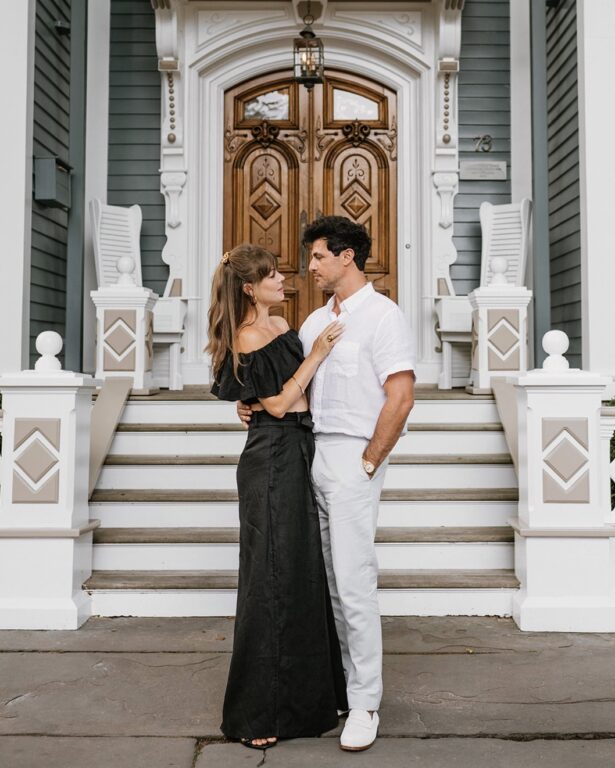












While some of you may be informed about how the so-called “fashion blogger” or “influencer”, like myself, makes his/her living, there are still a handful of you who may be confused about the inner workings of it all. Now that the FTC requires #sponsored, you might be starting to question every little thing….
“Is this a sincere post?”
or worse, often times a comment like…
“unfollow, I can’t believe this was #sponsored”
For readers, it’s only natural to question the sincerity of the content you’re seeing, and because I am always honest and genuine with each of you, I wanted to share my feelings on the subject that has such a negative stigma attached to it.
As a content creator, I find great joy in creating unique, exclusive content to share with you. So much so that this is how I originally and organically came to be a blogger. From an unsponsored standpoint, designers and brands were naturally a part of this content because in the end, it’s the outfit that makes the look, the location that tells the story, and the branding that brings the content to life.
With fashion blogging’s birthday nearing its decade year old benchmark, you have to understand the evolution of the influencer and what a transformative opportunity fashion blogging was for designers and brands. Before bloggers, brands clamored at the opportunity to gift a celebrity a product in the hopes that they’d find a street style look, often shot by paparazzi, to use as marketing material. Basically saying, “Hey, if this celeb is wearing it, so should you”. Sometimes brands would even pay the celebrities directly to wear their product as part of an endorsement deal. We saw this happening with fashion in everything from film and television to sports. And while I was never one who really cared about what celebs were wearing, a lot of people did and there was a lot of buying power behind a celebrity who was wearing your product.
The only thing about that, is often times we consider the things celebrities do and wear to be aspirational, not attainable. Meaning there was a huge gap between what consumers liked to see on celebrities and what the consumer actually felt comfortable adopting for themselves.
Enter the fashion blogger: the bridge between aspirational and attainable. Just like you, she is the girl next door. She’s shopping at your favorite stores and styling things in ways you would too. The fashion blogger quickly became a peer who consumers began to look to for inspiration across all verticals: style, travel, interiors, food, you name it! And it didn’t take brands long to tap into this guerilla-style marketing with product placement opportunities. As a result, so much has transpired in the way we consume products as a direct result of the rise of the influencer.
While this topic is still VERY passé to write or talk about, I felt that I needed to address it with each of you in order to share my creative process, especially when I do make the conscious decision to work with a brand.
If you don’t know by now, my background before blogging began in editorial and wardrobe styling and public relations. As a stylist, I was hired by a brand to style things – like their look books and press images – that they would then use to promote and generate awareness for their collections. Today, at times, brands hire me to create content around a campaign or a collection that they are looking to generate awareness for. The only difference in this case is that I am the “model” and I’m featuring the images across my platforms.
While it’s definitely a form of product placement, yes, that by no means makes it disingenuous. To be approached by brands is a huge affirmation that the work you’re creating is something they too want to be a part of! It’s crazy exciting! So you can imagine how frustrating it might be as a content creator to know that there’s this stigma that exists for the wrong reasons.
Maybe some people think that this isn’t considered work? And that jobs like this, where you spend hours carefully curating those industry relationships, creating creative briefs, putting together decks, writing thoughtful content, putting together looks, hours shooting and editing, and then putting everything together online isn’t worth being paid for when a brand is interested? Not all the time – absolutely not. I certainly do not plan my editorial calendar post based on sponsored content. However, when I do get approached by brands, the integrity of my decision to work with that brand or not is based on a few key factors that I want to share with you all.
First and foremost, the collaboration has to make sense on a number of levels, so I always ask myself a few key questions before entering into a partnership if the brand does not already exist on my “brand wishlist”. First, does the branding of this company or designer align with that of Margo & Me? Would my readers enjoy learning about this brand as I have in the process? What’s a new angle I can tell this story from? And lastly, if this was not a sponsored post, would I organically feature this brand? If I have a second of hesitation, I wont.
I don’t know that a lot of people share this mindset or take this approach, which is where I think the stigma behind #sponsored has come from. However, it is my hope that in writing this, you guys will have some insight and a better understanding of my creative process and know that it comes from a place of nothing but love for the creative work I do.
Photos by Cibele Levi









